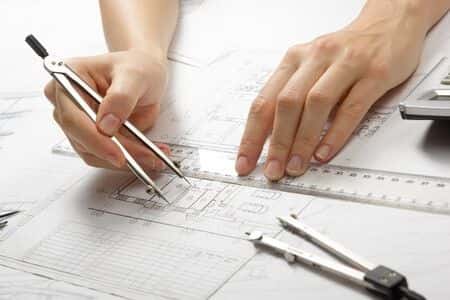Design Engineer Discusses Project’s Structural Issues
Updated on
This case involves a large urban development project. A city paid +$450 million dollars to construct a public transit terminal, two office buildings, and several other commercial spaces. This space was to be centrally located in the downtown area of the city and provide a new hub for public transportation. The public transit terminal was to be located directly underneath the office buildings, allowing employees to use public transit and enter their building directly. The two office buildings shared a large lobby that also functioned as the entrance of the public transportation terminal. Beyond the second floor, the buildings became separate structures. One year after the project was completed, the employees of the office buildings noticed some settling and structural issues. The city and the transit district brought suit against the engineering corporation for negligent design and integration of the numerous components and structures involved in the project.
Question(s) For Expert Witness
1. What measures are usually taken in order to ensure that an integrated project, like the one in this case, is designed and constructed properly?
Expert Witness Response
 The most important element involved in the design and construction of an integrated project is communication. The different engineers and designers from each structure or project must work together to ensure that each part of the structure can work in conjunction with the others. In addition, the engineers and designers of each part need to be prepared to make compromises in order for the structure to work together as a whole. In many cases where a transit hub is involved, low but consistent vibrations can have an adverse effect on the different structures of the complex. Furthermore, because of the proximity of the different buildings involved (considering their shared base), problems in one part may create subsequent problems in another. In my experience, settling and structural issues are serious enough that problems do not occur unless one party was negligent. A full analysis of what plans were shared and what information was provided to different parties would show how the process was designed. During actual construction, however, constant communication is just as critical, with delays and other items causing changes to the overall schedule. These should be explained to all relevant parties, so everyone can plan for any issues. I have over thirty years of experience in construction as a design engineer, and I am well-versed on the issues involved in this type of case.
The most important element involved in the design and construction of an integrated project is communication. The different engineers and designers from each structure or project must work together to ensure that each part of the structure can work in conjunction with the others. In addition, the engineers and designers of each part need to be prepared to make compromises in order for the structure to work together as a whole. In many cases where a transit hub is involved, low but consistent vibrations can have an adverse effect on the different structures of the complex. Furthermore, because of the proximity of the different buildings involved (considering their shared base), problems in one part may create subsequent problems in another. In my experience, settling and structural issues are serious enough that problems do not occur unless one party was negligent. A full analysis of what plans were shared and what information was provided to different parties would show how the process was designed. During actual construction, however, constant communication is just as critical, with delays and other items causing changes to the overall schedule. These should be explained to all relevant parties, so everyone can plan for any issues. I have over thirty years of experience in construction as a design engineer, and I am well-versed on the issues involved in this type of case.
About the author
Michael Talve, CEO
Michael Talve stands at the forefront of legal innovation as the CEO and Managing Director of Expert Institute. Under his leadership, the Expert Institute has established itself as a vital player in the legal technology arena, revolutionizing how lawyers connect with world-class experts and access advanced legal technology. Michael's role involves not only steering the company's strategic direction but also ensuring the delivery of unparalleled intelligence and cutting-edge solutions to legal professionals. His work at Expert Institute has been instrumental in enhancing the capabilities of attorneys in case preparation and execution, making a significant impact on the legal industry's approach to expert consultation and technological integration. Michael's vision and execution have positioned the Expert Institute as a key facilitator in the intersection of law and technology.
Subscribe to our newsletter
Join our newsletter to stay up to date on legal news, insights and product updates from Expert Institute.
Sign up nowFind an expert witness near you
What State is your case in?
Subscribe to our newsletter
Join our newsletter to stay up to date on legal news, insights and product updates from Expert Institute.



